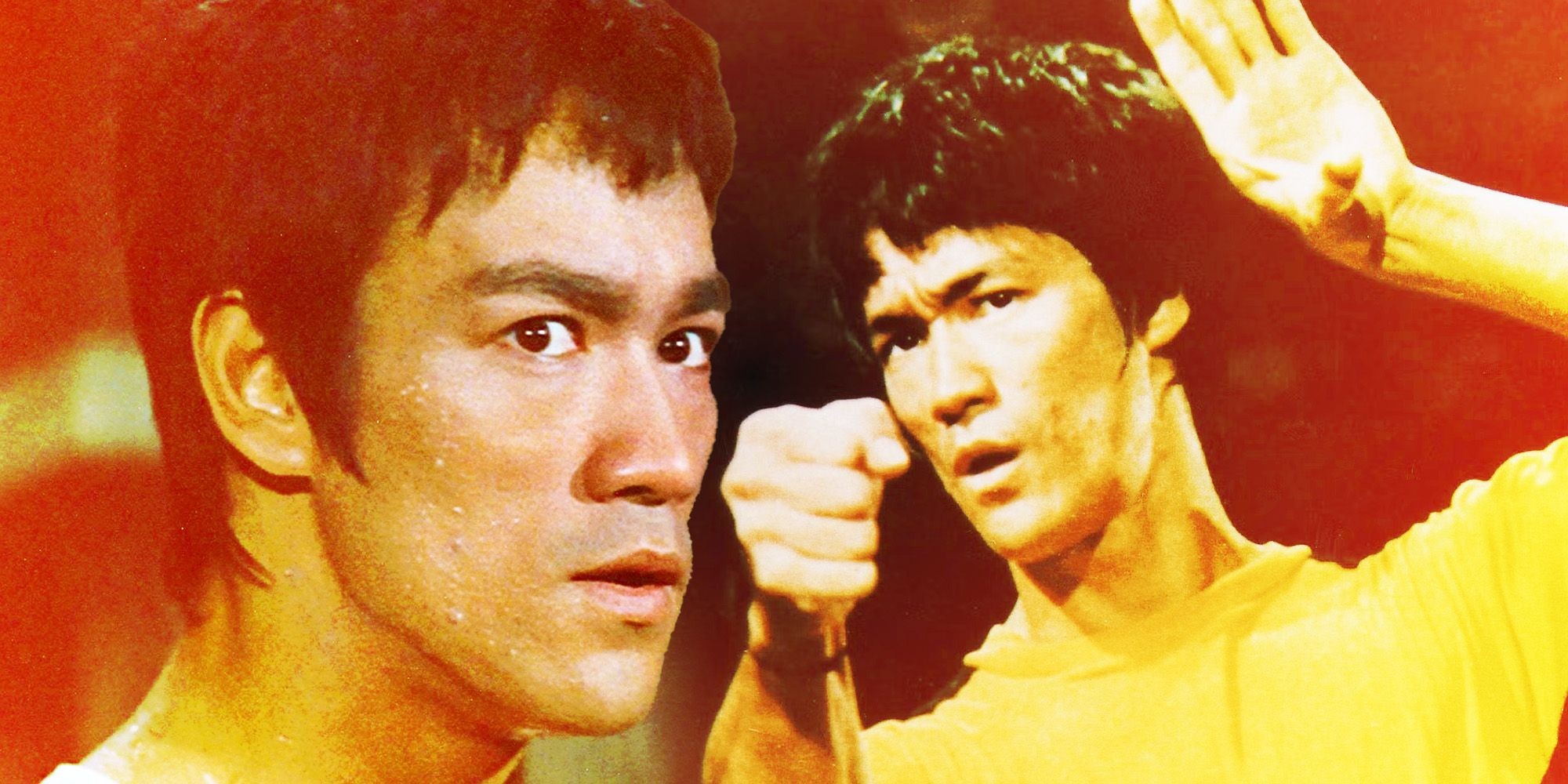What Martial Arts Did Bruce Lee Learn? Bruce Lee’s martial arts journey was a dynamic exploration of various fighting styles, blending them into his unique philosophy. This article explores the martial arts Lee mastered and their influence on his legendary fighting style. At LEARNS.EDU.VN, we aim to provide comprehensive insights into the world of martial arts and self-improvement. Delve into the world of martial arts, learn about the art of self-defense, and discover the influence of various fighting styles on Bruce Lee’s legendary approach.
1. Tai Chi: The Gentle Beginning
Early Exposure from His Father, Lee Hoi-Chuen
Tai Chi, known for its slow, deliberate movements aimed at promoting health and relaxation, was Bruce Lee’s first introduction to martial arts. His father, Lee Hoi-Chuen, practiced Tai Chi daily and imparted the fundamentals to young Bruce. While Tai Chi focuses on internal energy and gentle movements, it laid a foundation for Lee’s understanding of body mechanics and balance.
However, Bruce Lee himself found Tai Chi techniques to be “useless” in practical combat situations, according to Matthew Polly’s biography Bruce Lee: A Life. Despite this, the early exposure to Tai Chi principles likely contributed to his overall martial arts development.
| Aspect | Description |
|---|---|
| Primary Focus | Health, relaxation, and internal energy cultivation |
| Techniques | Slow, deliberate movements with emphasis on balance |
| Influence | Foundation in body mechanics, but not a core fighting style |
2. Wing Chun: The Foundation of His Fighting Style
Studying Under the Legendary Ip Man
Bruce Lee’s true passion for martial arts ignited when he began studying Wing Chun under the guidance of the legendary Ip Man. Wing Chun is a “soft” style of Kung Fu that emphasizes reflexive movements, speed, and efficiency. It focuses on redirecting an opponent’s force and disrupting their balance rather than relying on brute strength.
Lee was a dedicated student of Ip Man during the 1950s, immersing himself in the principles of Wing Chun. However, much of his practical training came from Wong Shun Leung, a senior student of Ip Man who served as Lee’s primary instructor. Lee later acknowledged Wong as his true Kung Fu teacher, recognizing his significant impact on his development.
| Aspect | Description |
|---|---|
| Primary Focus | Speed, efficiency, and reflexive movements |
| Techniques | Redirecting force, disrupting balance, close-range combat |
| Key Figures | Ip Man, Wong Shun Leung |
3. Boxing: Incorporating Western Techniques
Training and Studying Muhammad Ali
While primarily known for his Kung Fu skills, Bruce Lee also delved into the world of Western Boxing during his high school years at St. Francis Xavier. He trained with the school’s sports master, an experienced boxer who recognized Lee’s potential. By combining boxing techniques with his Wing Chun knowledge, Lee became a formidable fighter.
Lee even competed in a high school boxing tournament, winning his first and only official match. Later in his life, he studied the fights of Muhammad Ali, incorporating the heavyweight champion’s footwork and strategic movements into his own fighting style.
| Aspect | Description |
|---|---|
| Primary Focus | Striking, footwork, and strategic movement |
| Key Influences | Muhammad Ali |
| Impact on Style | Enhanced footwork, striking power, and adaptability |
4. Karate: Learning from Fellow Martial Artists
Sparring with Ed Parker and Chuck Norris
Bruce Lee did not have formal training in Karate but gained proficiency through sparring sessions with fellow martial artists in the 1960s. Among these sparring partners were Karate world champions Ed Parker and Chuck Norris. These training sessions allowed them to learn from each other’s unique skills and techniques.
Chuck Norris, for instance, taught Lee how to perform high kicks, adding another dimension to his already diverse fighting repertoire. This collaborative learning approach was characteristic of Lee’s open-minded approach to martial arts.
| Aspect | Description |
|---|---|
| Primary Focus | Striking, kicking, and blocking techniques |
| Key Figures | Ed Parker, Chuck Norris |
| Impact on Style | Improved kicking techniques, expanded striking options |
5. Judo: Embracing Grappling Techniques
Learning from Gene LeBell After a Challenging Encounter
Bruce Lee’s exposure to Judo came about in an unexpected way during the filming of The Green Hornet. Frustrated by Lee’s intensity, a group of stuntmen enlisted the help of Gene LeBell, a professional wrestler and Judo champion, to “teach Lee a lesson.” LeBell surprised Lee with a Judo-based attack, demonstrating the effectiveness of grappling techniques.
Instead of holding a grudge, Lee recognized the value of LeBell’s approach and sought to learn from him. He took lessons from LeBell, incorporating grappling techniques into his fighting style. LeBell even claimed that some of the holds used by Lee in Enter the Dragon were directly inspired by his Judo lessons.
| Aspect | Description |
|---|---|
| Primary Focus | Grappling, throws, and submissions |
| Key Figures | Gene LeBell |
| Impact on Style | Incorporation of grappling techniques, expanded close-range combat options |
6. Escrima: Mastering Weapon-Based Fighting
Learning Filipino Stick Fighting from Dan Inosanto
Escrima, a weapon-based martial art from the Philippines, played a significant role in shaping Bruce Lee’s fighting style. He learned Escrima from Dan Inosanto, a close friend and training partner. Inosanto, a renowned Escrima practitioner, taught Lee Filipino stick fighting, including the use of nunchucks.
Lee incorporated these weapon techniques into his films, showcasing the versatility and effectiveness of Escrima. His mastery of nunchucks became one of his signature moves, captivating audiences and inspiring martial artists worldwide.
| Aspect | Description |
|---|---|
| Primary Focus | Weapon-based combat, particularly stick fighting |
| Key Figures | Dan Inosanto |
| Impact on Style | Incorporation of weapon techniques, increased versatility |
7. Taekwondo: Incorporating Powerful Kicks
Sparring with Jhoon Rhee and Learning the AccuPunch
Bruce Lee expanded his knowledge of martial arts by sparring with Jhoon Rhee, a grandmaster in Taekwondo. Taekwondo, known for its powerful, high-kicking techniques, offered Lee a new dimension to his striking arsenal. Through sparring with Rhee, Lee gained a deeper understanding of Korean martial arts and improved his kicking skills.
However, one of the most significant techniques Lee learned from Rhee was the AccuPunch, a lightning-fast attack that Muhammad Ali himself described as unblockable. This addition further enhanced Lee’s already impressive speed and precision.
| Aspect | Description |
|---|---|
| Primary Focus | Kicking, striking, and speed |
| Key Figures | Jhoon Rhee |
| Impact on Style | Improved kicking techniques, enhanced speed and precision |
8. Jeet Kune Do: The Birth of a New Philosophy
Evolving Beyond Wing Chun
After years of practicing Wing Chun, Bruce Lee began to question its limitations. A challenging fight with Chinese martial artist Wong Jack Man further solidified his belief that Wing Chun was a flawed system. This led Lee to develop his own unique fighting style, drawing from all the martial arts he had learned.
Combining elements of Wing Chun, boxing, fencing footwork, and other disciplines, Bruce Lee created “the way of the intercepting fist,” known today as Jeet Kune Do.
| Aspect | Description |
|---|---|
| Primary Focus | Adaptability, efficiency, and self-expression |
| Key Principles | Interception, simplicity, directness |
| Influence | Revolutionized martial arts philosophy and training methods |
A Philosophy, Not Just a Style
Jeet Kune Do is more than just a fighting style; it’s a philosophy that emphasizes adaptability, efficiency, and self-expression. It encourages practitioners to be fluid and responsive, adapting their techniques to the specific situation. Unlike traditional martial arts, Jeet Kune Do does not adhere to fixed stances or movements.
Bruce Lee designed Jeet Kune Do to be practical and effective in real-world combat situations, emphasizing directness and simplicity. His creation revolutionized the martial arts world, inspiring countless practitioners to explore their own unique paths.
Bruce Lee’s Enduring Legacy
Bruce Lee’s martial arts journey was a testament to his open-mindedness, dedication, and relentless pursuit of knowledge. He embraced diverse fighting styles, incorporating them into his unique philosophy of Jeet Kune Do. His influence on martial arts and cinema remains profound, inspiring generations of fighters and filmmakers.
| Martial Art | Primary Focus | Bruce Lee’s Application |
|---|---|---|
| Tai Chi | Health & Relaxation | Early exposure to body mechanics and balance. |
| Wing Chun | Speed & Efficiency | Foundation of his fighting style, emphasizing close-range combat and redirection of force. |
| Boxing | Striking & Footwork | Enhanced footwork, striking power, and strategic movement. |
| Karate | Striking & Kicking | Improved kicking techniques and expanded striking options through sparring. |
| Judo | Grappling & Throws | Incorporation of grappling techniques for close-range combat. |
| Escrima | Weapon-Based Combat | Mastery of weapon techniques, including nunchucks, for increased versatility. |
| Taekwondo | Kicking & Speed | Improved kicking techniques and enhanced speed and precision. |
| Jeet Kune Do | Adaptability & Self-Expression | Culmination of his martial arts knowledge, emphasizing fluidity, efficiency, and personal expression in combat. |
 An image of Bruce Lee preparing to fight, showcasing his intense focus, unwavering determination, and unparalleled skill in the martial arts
An image of Bruce Lee preparing to fight, showcasing his intense focus, unwavering determination, and unparalleled skill in the martial arts
LEARNS.EDU.VN: Your Guide to Martial Arts and Self-Improvement
Are you inspired by Bruce Lee’s journey and eager to explore the world of martial arts? At LEARNS.EDU.VN, we offer a wealth of resources to help you on your path to self-improvement. Whether you’re a beginner or an experienced practitioner, you’ll find valuable information and guidance on various martial arts disciplines.
Visit LEARNS.EDU.VN to discover articles, tutorials, and courses that will empower you to unlock your full potential. Our expert instructors and comprehensive resources will help you develop your skills, build confidence, and achieve your goals.
Frequently Asked Questions (FAQ)
Here are some frequently asked questions about Bruce Lee’s martial arts journey:
- What was the first martial art Bruce Lee learned?
Bruce Lee’s first martial art was Tai Chi, which he learned from his father. - Who was Bruce Lee’s primary Wing Chun instructor?
While Ip Man is credited as Lee’s Kung Fu master, most of what Lee knew about Wing Chun came from Wong Shun Leung. - Did Bruce Lee ever compete in boxing matches?
Yes, Bruce Lee competed in a high school boxing tournament and won his first and only official match. - How did Bruce Lee learn about Karate?
Bruce Lee learned about Karate through sparring sessions with Karate world champions Ed Parker and Chuck Norris. - What martial art did Bruce Lee learn from Gene LeBell?
Bruce Lee learned Judo from Gene LeBell, incorporating grappling techniques into his fighting style. - Who taught Bruce Lee Escrima?
Bruce Lee learned Escrima, including Filipino stick fighting, from Dan Inosanto. - What was the AccuPunch technique that Bruce Lee learned?
The AccuPunch is a fast attack described by Muhammad Ali himself as unblockable, which Bruce Lee learned from Jhoon Rhee. - What is Jeet Kune Do?
Jeet Kune Do is Bruce Lee’s unique fighting style, a philosophy that emphasizes adaptability, efficiency, and self-expression. - Was Bruce Lee a master of many martial arts?
Yes, Bruce Lee mastered many martial arts including Tai Chi, Wing Chun, Boxing, Karate, Judo, Escrima, and Taekwondo. - How can LEARNS.EDU.VN help me learn martial arts?
LEARNS.EDU.VN offers articles, tutorials, and courses to help you explore and master various martial arts disciplines.
Unlock Your Potential with LEARNS.EDU.VN
At LEARNS.EDU.VN, we are committed to providing you with the knowledge and resources you need to achieve your goals. Whether you’re interested in martial arts, academic subjects, or personal development, we have something for everyone.
Contact us today:
- Address: 123 Education Way, Learnville, CA 90210, United States
- WhatsApp: +1 555-555-1212
- Website: LEARNS.EDU.VN
Explore learns.edu.vn today and discover the power of knowledge. Let us help you unlock your full potential.
